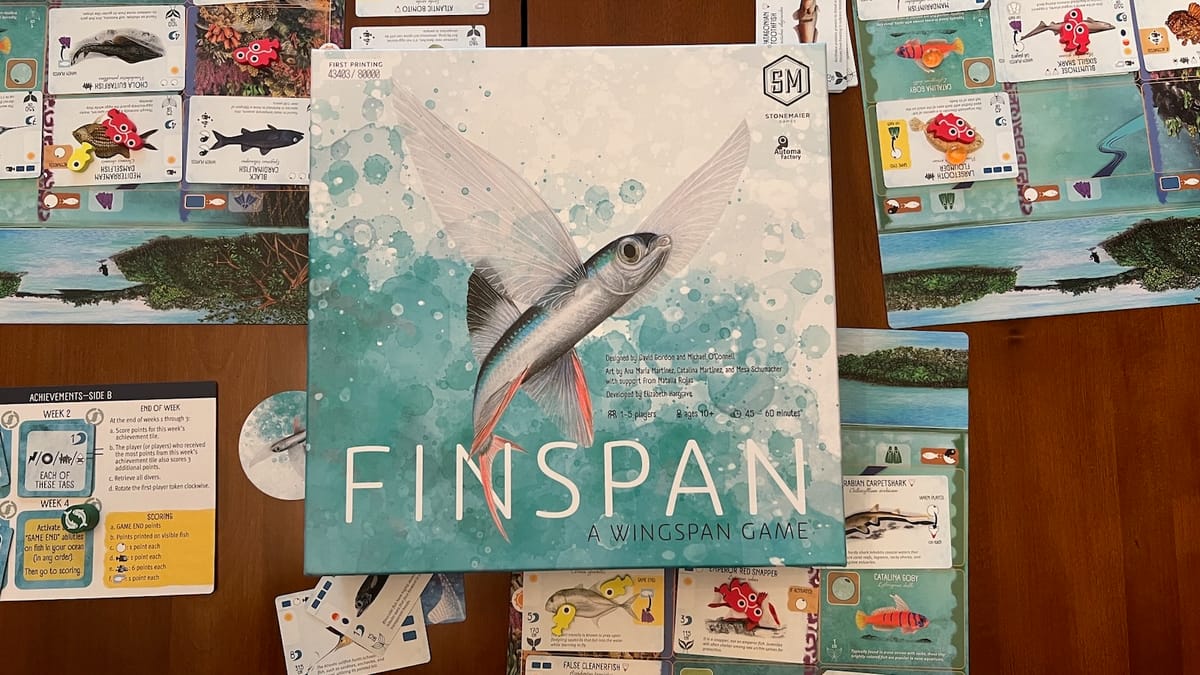
I think I was with the rest of the world in being a bit reticent when the news of a new “span” game based on fish was hitting the retail shelves. Wingspan set the tone and offered up a great medium-light gateway game. They have since expanded the game, released a 2 player variant, and have plans for more expansions in the future. Then came Wyrmspan, a chunky dragon themed game that improved and deepened the core mechanics of Wingspan and was one of my favorite games of 2024. But I had my doubts about Finspan, especially so close to the release of the previous iteration. However, after playing through the game quite a few times, I’d reel this one in quick.

Finspan comes from publisher Stonemaier Games and is designed by David Gordon and Michael O’Connell. The original designer of Wingspan, Elizabeth Hargrave, also stepped in as a developer. Finspan plays 1-5 players and takes them on an underwater journey to explore the different species of fish that reside there.
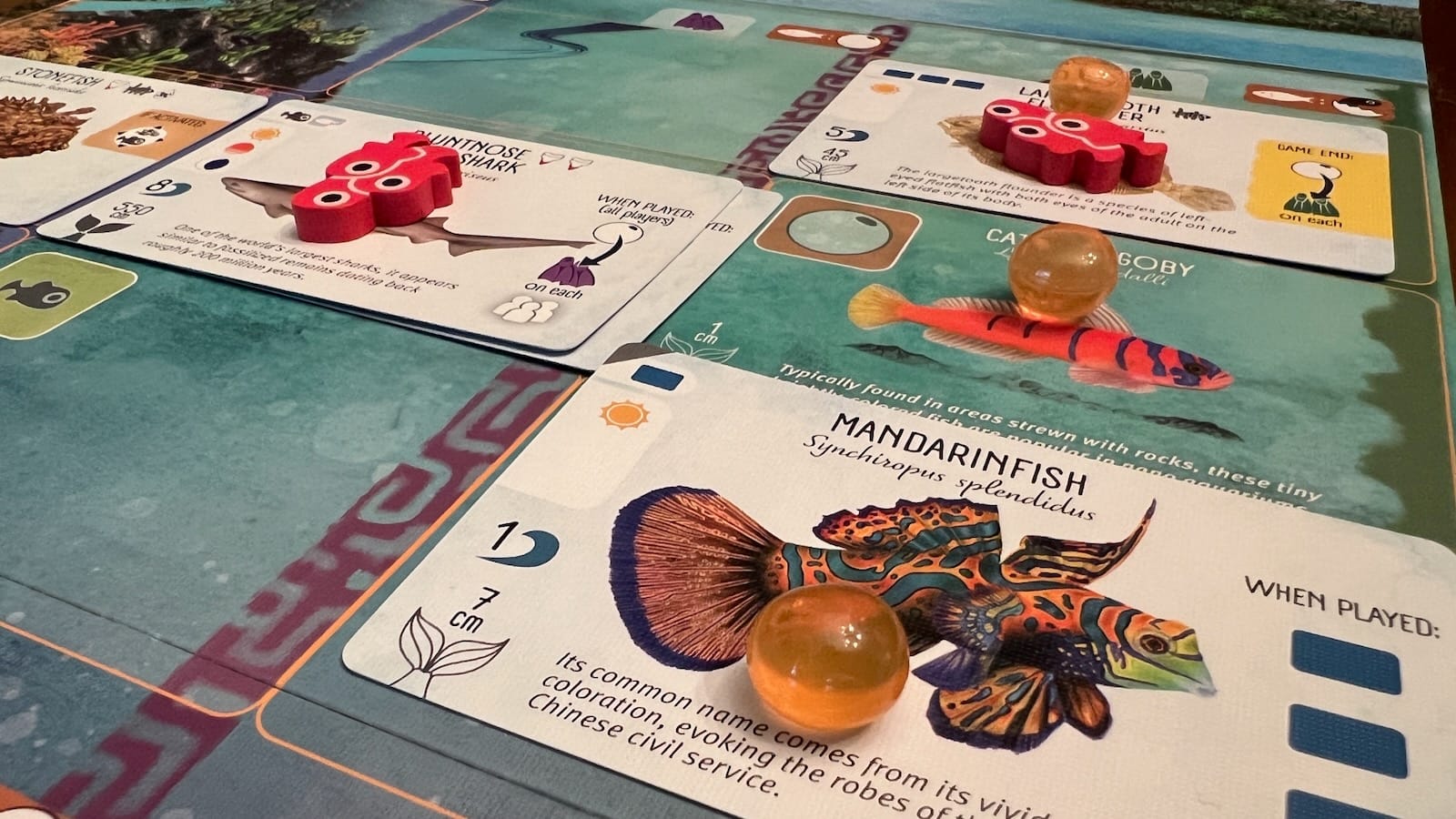
Finspan takes the board design of the previous games and flips it on its side, giving players three columns to collect their fish in one of three depth zones. Each column is delineated by a different color/design of flippers. The players will also begin with three fish pre-printed on their boards, one at each depth. Also placed on the board will be a number of egg tokens and a young fish token. Each player will have six diver tokens that will be used to take turns and five starting cards that they will keep face up next to their board.
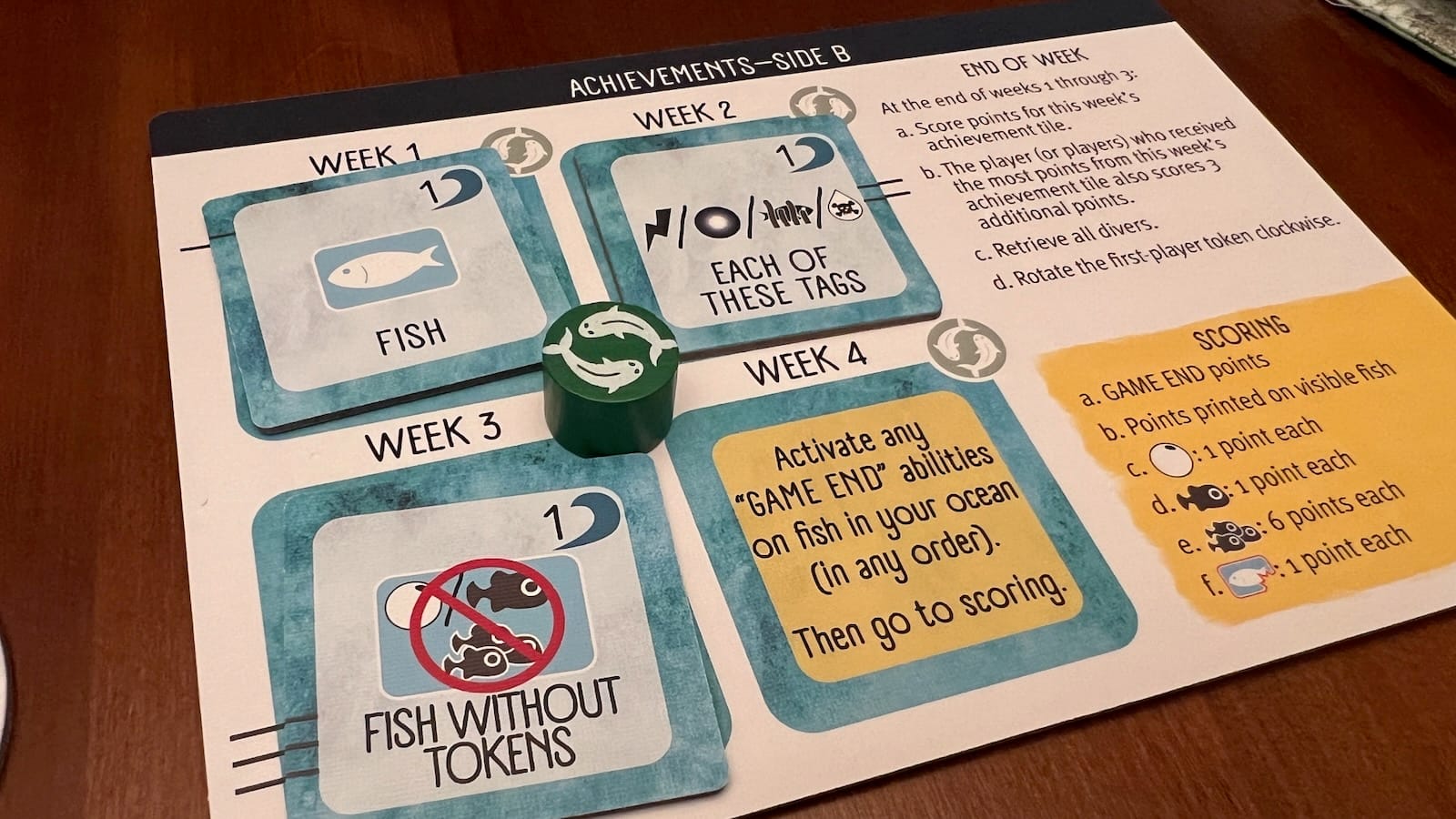
The game will progress over the course of four rounds or “weeks.” At the end of each week, an end of round scoring condition will be scored by all players, randomly chosen at the beginning of the game. Each player will get six turns during each week of the game in which they will play a card from their tableau or dive one of the three dive site columns.
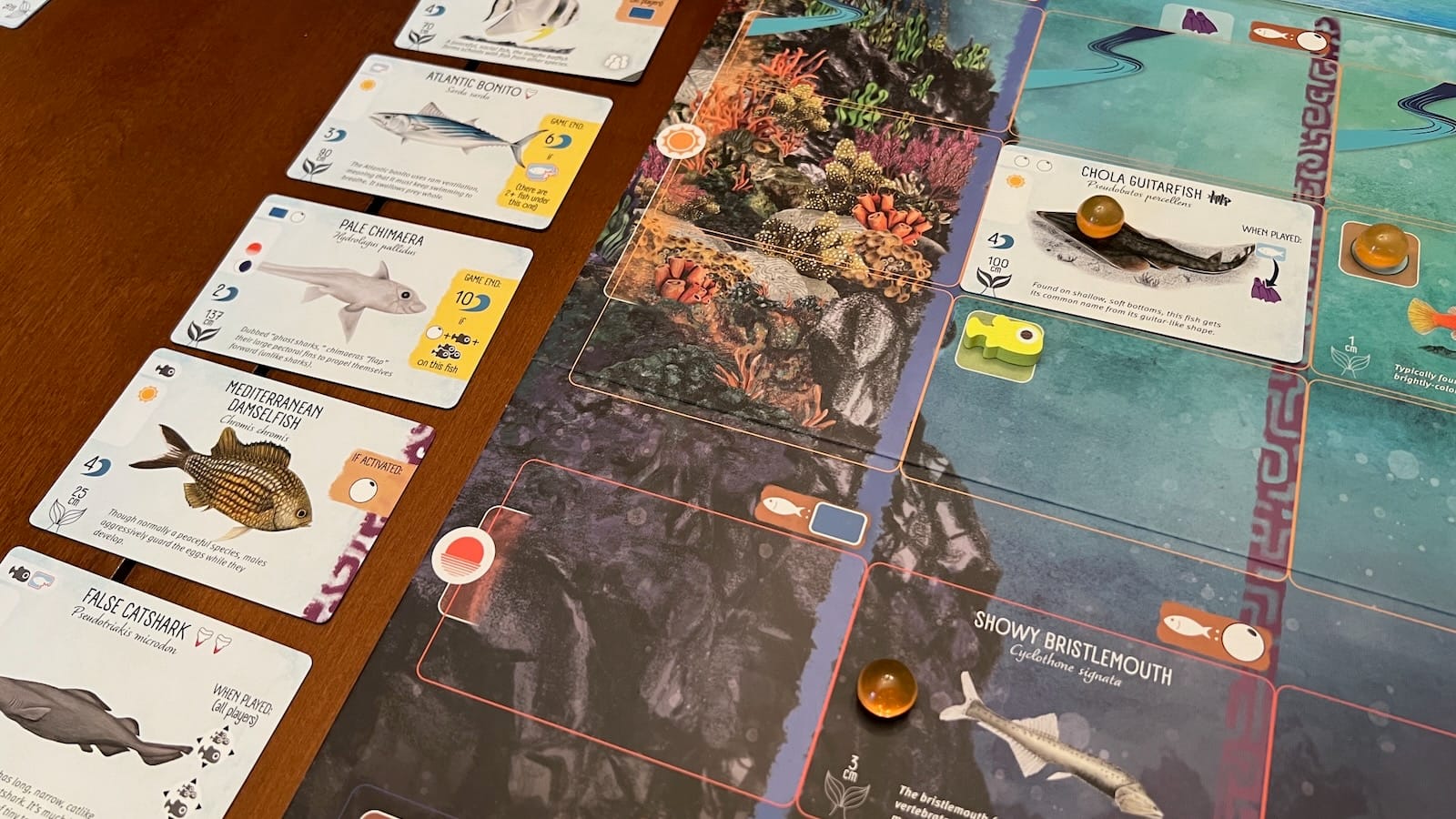
To play a fish, a diver token is placed on the upper left portion of the board. Then a player will pay any costs which come in the form of egg or young fish tokens, discarding cards from their hand, or even eating other fish by placing a larger fish on top of a smaller one on the board. Fish are also restricted to specific columns or depth zones. Each fish will give players end game points and come with a size indication that is delineated by a tail icon and a measurement. Fish cards will usually come with an “when played,” “when activated,” or “end game scoring” abilities. The first is activated when placed on the board, the last is scored during the end of week four scoring, and the middle is activated when taking the dive action.
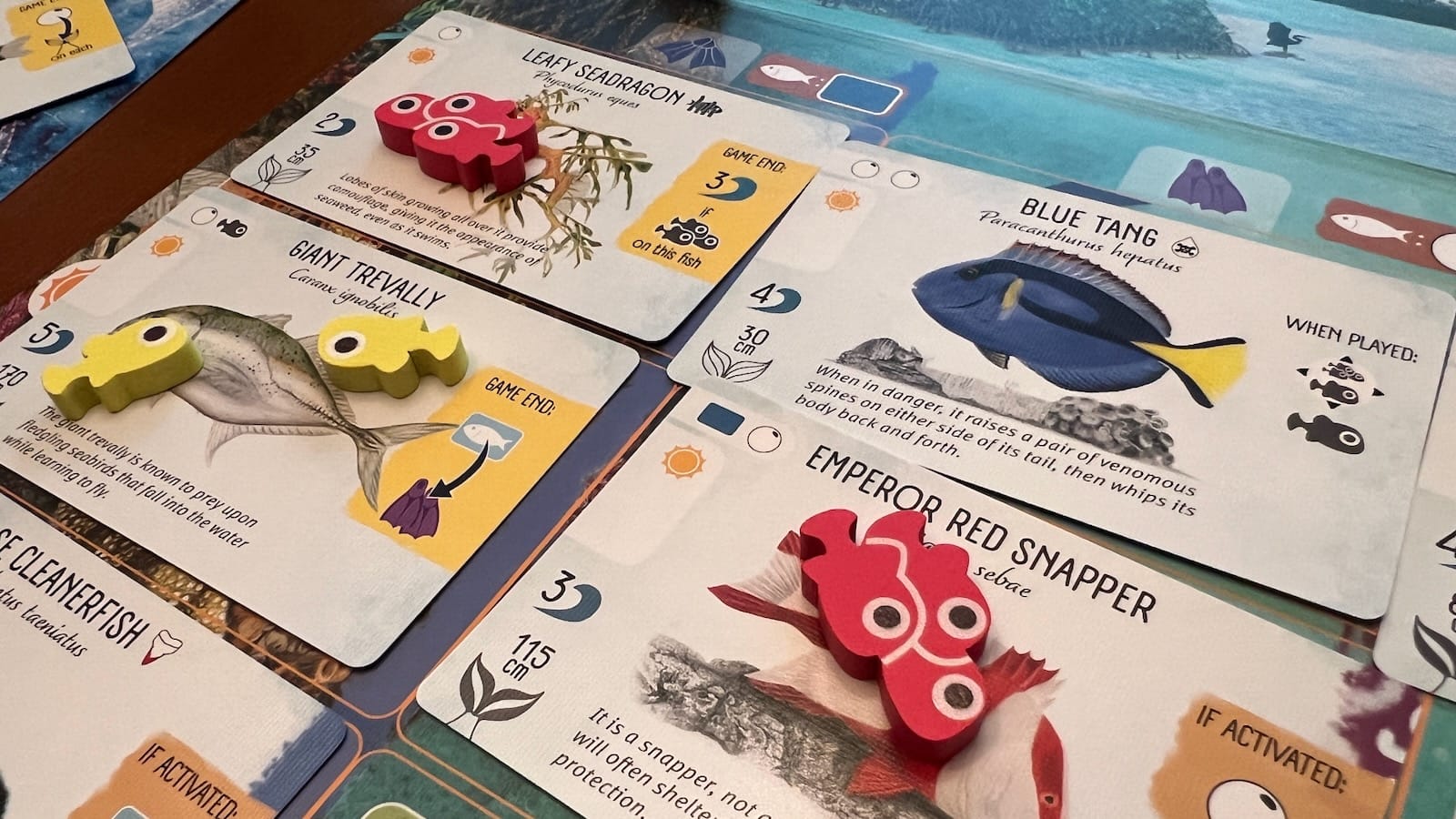
The dive action is taken to draw cards, gain eggs, hatch fish from eggs, and move fish tokens around the board. Players will take a diver token and choose one of the three dive site columns to activate. Starting at the top and working their way deeper, the diver token will activate and zone or fish bonuses they encounter. In order to activate a zone bonus, there must be at least one fish in that column and in the zone. If it is the first time a player has sent a diver to that dive site in a round, they will gain the bonus at the bottom of the column.

There are three types of tokens used in the game, which are essentially the resources. Each fish card can hold one egg token. Fish tokens will hatch into young fish tokens and each space can hold as many young fish as it wants. Whenever three young tokens end up in the same space, they turn into a school token. There can only be one school token per space and schools are worth six points a piece at the end of the game. Schools cannot even pass through another school token, so maneuvering these tokens around the board becomes a big part of the game.
At the end of week four, each player will score the following:
- End game scoring abilities printed on fish
- Points printed on fish cards
- Each consumed fish earns one point
- Each egg and young token earns one point
- School tokens gain six points each
Solo Variant
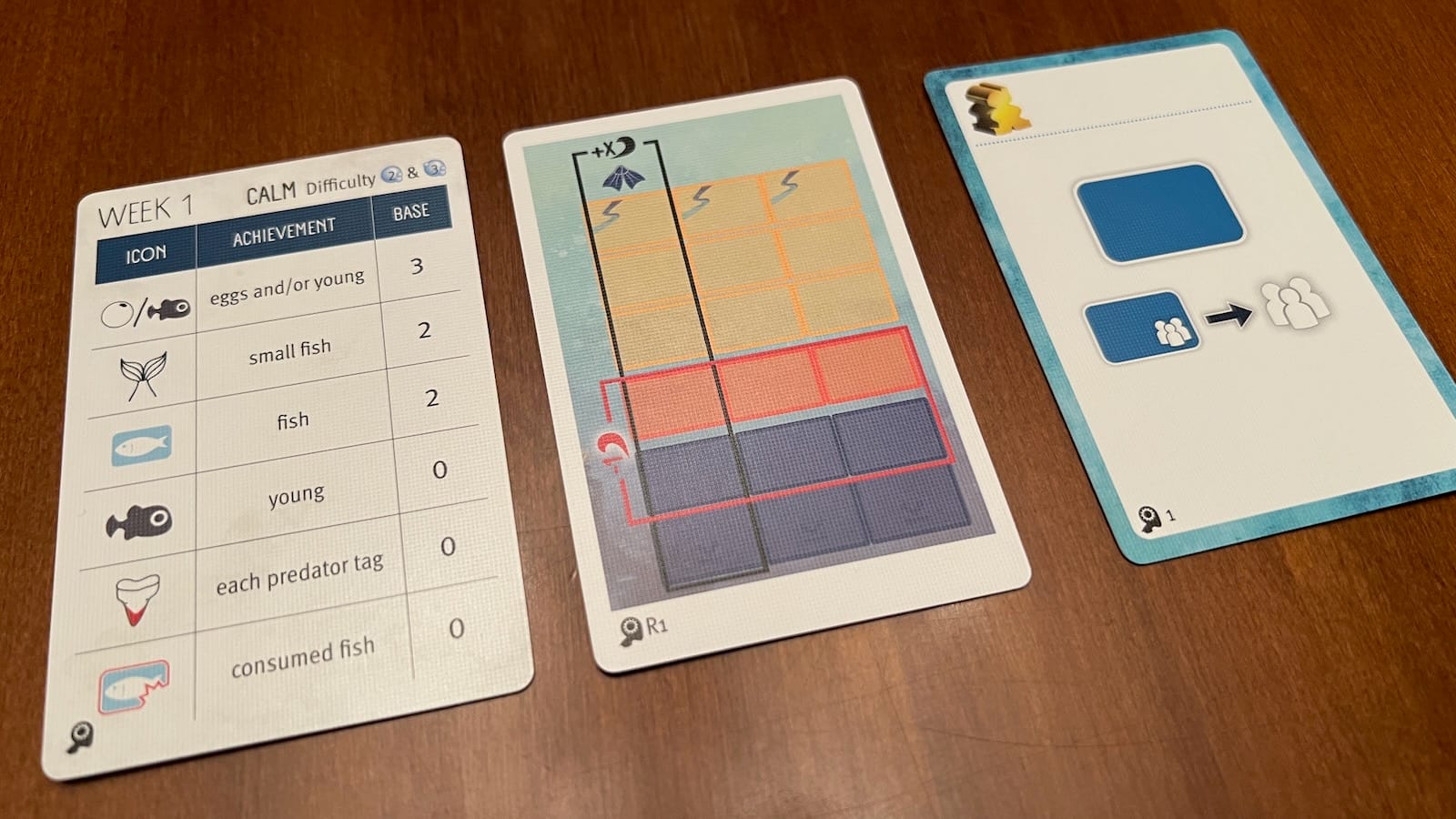
The solo variant for Finspan, designed by David Studley and Karel Titeca, comes in its own manual and is called the Nautoma. The Nautoma can be scaled to five different difficulty levels by flipping different combinations of achievement cards to their calm and/or stormy sides.
While the solo player will take turns normally, Nautoma’s turns are taken by flipping over cards from a special deck. On their turn, they will flip a new card. First they will either place a diver on their achievement card or take one off. Then they will take either a dive or play a fish action. Since Nautoma does not use a player board, a dive action consists of converting tokens, such as eggs to young, young to schools, and gaining more eggs. On the play a fish action, Nautoma draws a fish from the deck and activates any “all players benefit” when played actions. Likewise, Nautoma will gain eggs when the solo player activates or plays an all benefit card.
At the end of each week, Nautoma will score achievements based on the number of divers on their achievement card. Using the chart on the achievement card will determine the number of points scored. At the end of the game, Nautoma will score a number of points from their fish cards, young and egg tokens, and schools of fish depending on the difficulty level. The higher the difficulty, the more points each is worth.
Ravel Varient
The Ravel Variant plays just like above, but gives Nautoma another way to score points. Using a specified card, Nautoma will score or lose bonus points based on where the solo player has placed their fish. This adds a layer the solo player must think about when placing fish in specific columns and zones. Players can also scale this variant by setting the number of points she earns from each fish in one of her spaces.
Overall Thoughts
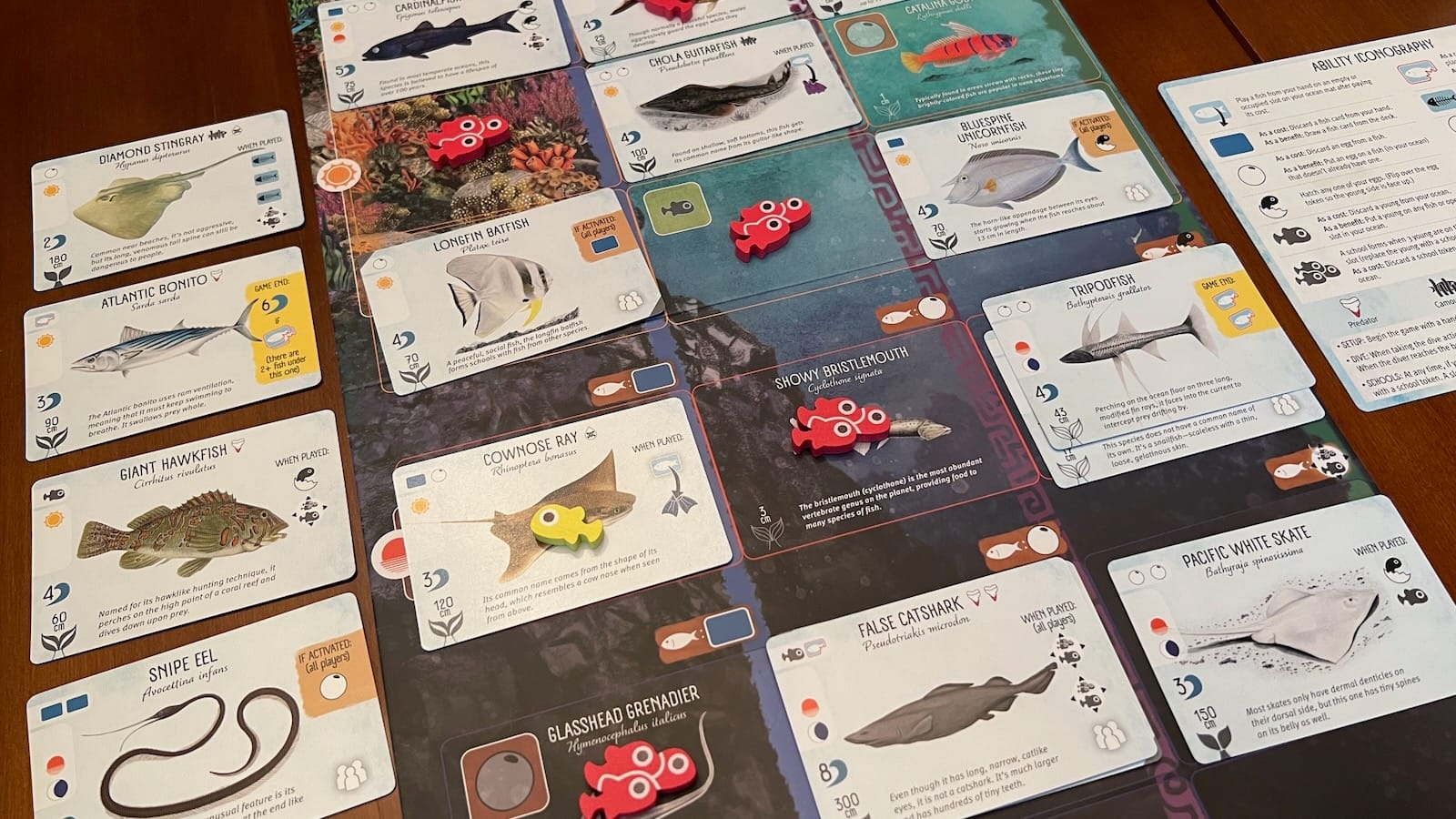
I was pleasantly surprised at how much I loved this game. The production, as with all Stonemaier games, is fantastic. The artwork shines through on the player boards and each and every fish illustration that graces the game. I have to give a huge shout out to Ana Maria Martinez, Cataline Martinez, Mesa Schumacher, and the support given by Natalia Rojas and Elizabeth Hargrave. The design of the cards and the iconography make gameplay easy to pick up and the young fish tokens are some of the cutest and friendly tokens I’ve ever seen! I almost want to put those big googly eyes on every single meeple I come across from now on. As with most Stonemaier products, you can upgrade your eggs, young, and school tokens with a deluxe pack for about $20. My one detractor from the production is that the player boards warped a bit on me when left out of the box. The cardboard is fairly thin and whatever moisture was in the air, left them with a little bend.
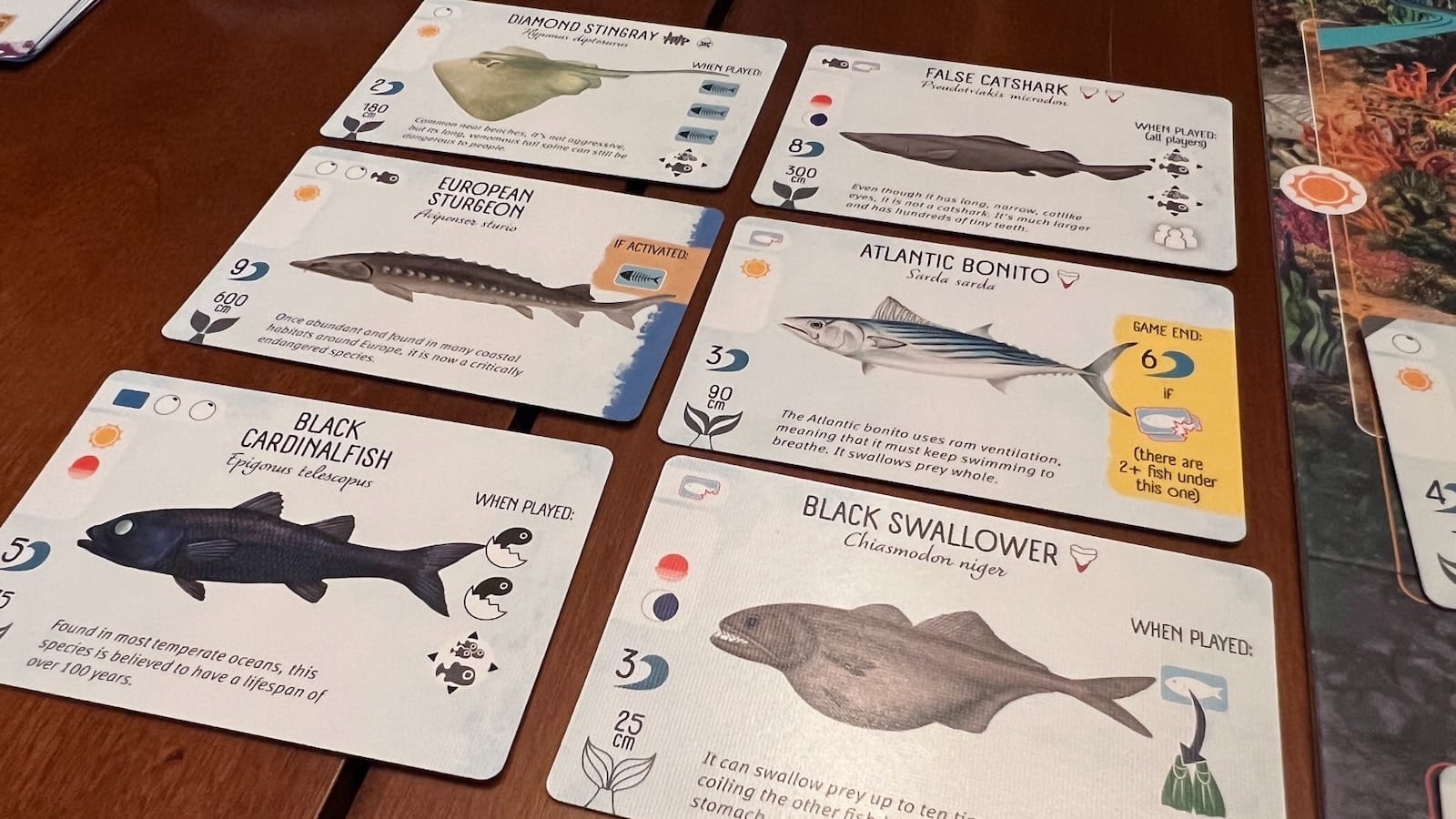
The gameplay of Finspan is very open-handed and straightforward. Everyone's cards are faceup and able to be seen so all information is out in the open. Another great addition to the game is the personal discard pile. Players are often able to take fish they have discarded and add them back into the hand throughout the game. A card that can’t be used now, could be discarded, regained, and played on a later turn. The simplistic resources used in the game makes it easy to make decisions and manipulating the young fish into schools can earn players some big points at the end of the game. Even the solo mode is fantastic and easy to pick up. I found my sweet spot at Level 3 difficulty and adding in the ravel module added another layer of depth. Even though many consider Wingspan a great gateway game, I believe that Finspan is even better. They took the elements of card activation from Wingspan, exploring the caves and activating cards in Wyrmspan, simplified the resources, and made a very accessible and fun to play game!
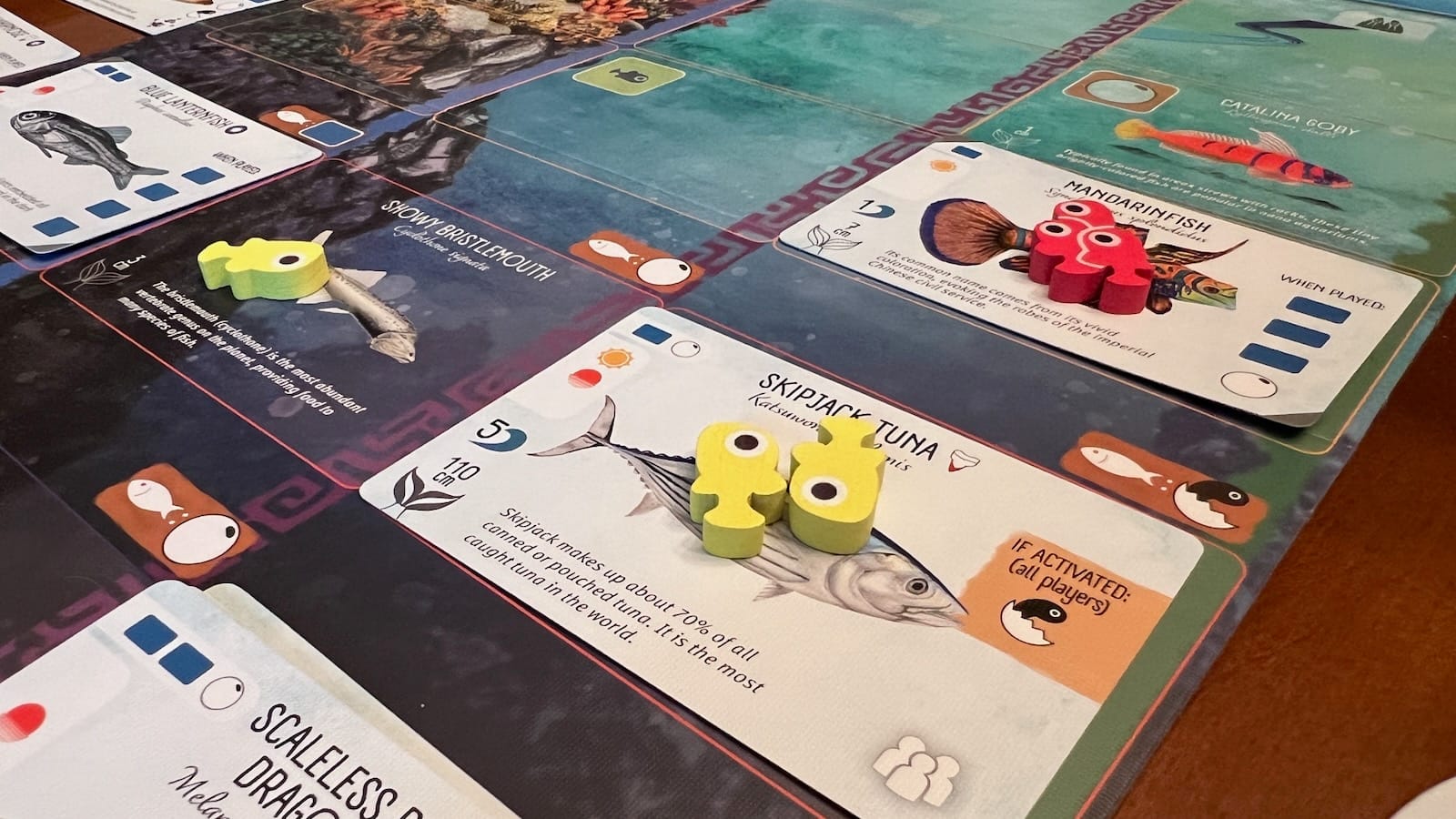
So where does it rank in the Spaniverse? Wyrmspan will be my first choice for an involved and combotastic experience that hits on a number of different levels. Finspan is going to be my number two with Wingspan being number three. I think my biggest turn off for Wingspan is the randomization of the resource pool and feeling bogged down in some of my turns. With Finspan, there is always something to do and I never felt like I wasted a turn.
Finspan
Excellent
Finspan is a great introduction to modern gaming. With an easy level of entry and some great strategic decisions, this is a great introduction to the “span” games.
Pros
- Gorgeous artwork and adorable fish tokens!
- Easy to learn but strategic gameplay
- A robust solo mode that is easy to run
Cons
- May get overshadowed by its big brothers
- Some minor warping of the player boards
This review is based on a retail copy provided by publisher.
